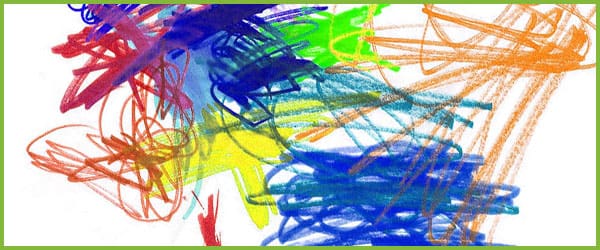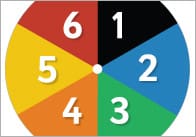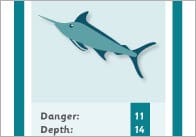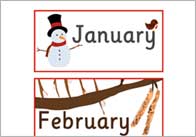Mark making activities, ideas & resources

One of the first thing to note with mark making is that it’s important that activities are linked to children’s interests and are not overly prescriptive. Where a child is disinterested in mark making exercises a certain amount of tact needs to be used.
Mark Making Activities
One simple idea is to create bespoke dry-wipe writing frames.
These can be done by firstly observing the interests of particular children during their play. Then stick an A4 piece of paper on to a larger piece of backing card. Stick a picture that relates to the child’s interests on the A4 paper and laminate in an A3 pocket.
Thanks to Alistair Bryce-Clegg for that one. Another couple of mark-making ideas taken from Alistair’s Blog…
“Dandelion sap works really well as invisible ink! Get the children to pick a flower and then mark make with the sap from the stem. To reveal what they have done, either leave in the sun to dry or heat on a radiator. Their work will magically appear!”
“Use a washing liquid container with a roller ball on one side. Brilliant for large scale mark making if filled with paint. TIP: If you want the ball to run smoothly and not stick, add washing up liquid or wallpaper paste to the paint!”. See ABC Does for further details.
You could also try using a wheelie painter, foot stamper or some art sticks. The latter of which can be blended as if they are oil pastels but the twist action-stick reduces mess and eliminates waste. Painting with bubble wrap can also be quite engaging as lets face it everyone loves a bit of bubble wrap. Driving wheeled vehicles, tyres and balls through paint can be a very attractive prospect particularly for boys.
Encouraging children to use found objects from outside like feathers, leaves, sticks and mud in mark making activities can also be very effective. Painting different textured surfaces – brick walls, fences outside floors and then taking a print using a piece of paper can be really fun. Using chalk on floors and walls is another good one. The good thing with both of these techniques is that you can involve the children in the clean up with the use of some large scrubbing brushed with handles (available in most pound shop). Give them a bowl of warm water and encourage them to clean the painted surfaces – this is another mark making experience in itself and also helps with the development of their gross motor skills.
A few more mark making ideas:
Painting on sheets / pieces of hessian with mud made from different types of soil.
– Paint the wall with water diluted with Brusho.
– Spray a sheet of plastic with a thin layer of paint and use a squeegee to make marks in the paint.
– Make crayon rubbings using natural objects as well as textured surfaces like brick walls, wooden fences, floors etc.
– Encourage children to make their own road ways (or small world play train tracks) using a roller with paint on to the ground or large flattened cardboard boxes.
Remember to have lots of clipboards with different types of pens, pencils, crayons etc attached to them via string dotted around your setting (indoors and outdoors). Also make use of envelopes and postcards and create some sort of post box.
Blank wall space in your outdoor setting could be transformed in to a large doodle space using an outdoor whiteboard or self adhesive blackboard foil. You could also fix wooden batons to walls so that paper can be easily attached. Place a piece of guttering underneath in order store paint and pens etc. Just as with the bespoke dry-wipe writing frames you could stick pictures relating to children’s interests on or near the doodle wall to entice reluctant mark-makers. You could also create an even more interesting doodle wall by attaching a large piece of paper to a corrugated surface like a bamboo or willow fence (or even a wall covered with bubble wrap) and encouraging children to paint with decorating rollers.
Outdoor easels are always a good addition to an outdoor setting but if you’re budget won’t stretch that far you could always just use a few big cardboard boxes with a piece of paper fixed to each side.
Varnished log discs can also act as dry wipe mark-making surfaces. Local councils will often provide logs gratis if you contact their tree surgery departments, and very often they may well chop them in to segments for you depending on how kind they’re feeling. If not then track down someone with a chainsaw (preferably not a crazy person) and ask them nicely if they will chop some windfall logs in to discs for you. This idea was also taken from the ABC Does Blog.
The following is a list of games involving mark-making taken from a document submitted by samplea on the Times Educational Supplement.
‘My drawing says’
A simple and fun way for children to understand that making marks on paper is a way of communicating a message. Draw a vertical line with a thick felt-tipped pen on an A4 sheet of paper, a horizontal line on another sheet, and a circle on another. Hold up the vertical line and say ‘My drawing says ‘stand like a soldier!’ and encourage children to stand as tall and straight as possible. Hold up the horizontal line and ask what the children think the drawing is ‘saying’ (‘lie down flat on the floor’). Hold up the circle and see if the children curl up like a ball or jump up and down like one. Devise more drawings together and what they mean e.g. an upturned arrow meaning ‘stretch up’, a downward pointing arrow meaning bend down, an upturned crescent meaning ‘smile’ and an arc meaning ‘a sad mouth’.
Wonderful wallpaper
The backs of unwanted rolls of wallpaper provide plenty of room for larger scale drawings. Children can draw ‘lorry with a million wheels’, a huge crocodile’s open mouth with lots of zigzag teeth, the ‘twistiest turniest road in the world’, a giant, a rocket ship etc.
Drawing outside
Children love drawing outside either on paper or directly onto the ground with chalks, especially when it’s related to their role play passions, e.g. an enormous fire-engine with a long, long ladder, a pirate ship etc. A perfect book to inspire outdoor mark-making is ‘We’re going on a Bear Hunt’ by Michael Rosen. Get the children to make simple marks to represent the grass, the river, the mud, the forest, the snow storm, and the cave. Add play people and a miniature dog, either to represent the family in the story or your own group of people, and a miniature bear, to make your story come to life.
Magic drawing table
From a department store buy one or two metres of ‘Crystal’ clear plastic tablecloth covering or rolls of PVC tablecloth coverings. Cover a table with white paper and place the plastic covering on top. Provide chunky washable felt-tipped pens and a few small world items related to your children’s current passions, e.g. a pirate ship. Don’t provide chairs, and do join in with the children. ‘Now, here’s our pirate ship on the sea. What can we draw around it? Waves, dolphins and sharks! Ask lots of questions, is that an island nearby? what will we find? Trees, rocks, shells, a treasure chest etc. You could draw just one or two items in a corner of the paper, to get children going e.g. a few jungle leaves and trees. Add animals and play people.
Provide slightly damp pieces of cloth and children can draw and re-draw as often as they like. Children will enjoy the smooth gliding sensation of drawing on the plastic, and the fact that they can instantly change something, as some children do not like to ‘make mistakes’ on paper. The possibilities are endless – a castle surrounded by a moat, ‘with mountains, and a forest all around’, sunken treasure on a shipwreck at the bottom of the sea, a rocket zooming past the planets and stars in outer space.
You could also make smaller drawing boards by using A4 sheets inside plastic punched pockets on clipboards, or laminated sheets of plain card. Children enjoy the smooth, flowing sensation and the fact they can instantly change things.
Look at me!
When children show an interest in drawing clothes, print off some colour photos of children, and cut out their faces – about 6cms high. Let children stick their faces onto paper, and then draw themselves in their favourite clothes, or uniforms. Inspire children to enjoy drawing, and they’ll be well on the way to enjoy writing.
Dinosaur Hunt!
On white card, draw large individual ‘dinosaur teeth’ or simple bone shapes. Cut them out and hide them in the grass. Equip your ‘dinosaur fossil explorers’ with clipboards and encourage them to hunt for the ‘specimens’ and to draw what they find.
I hope these ideas are helpful. If you’re looking for more mark making inspiration then you could try The Little Book of Mark Making: Little Books with Big Ideas (Little Books) or 50 Fantastic Things to Do with Paint.
Popular Teaching Resources
Stay Up To Date
Sign up for our newsletter and we’ll let you know when we create new early years resources.





